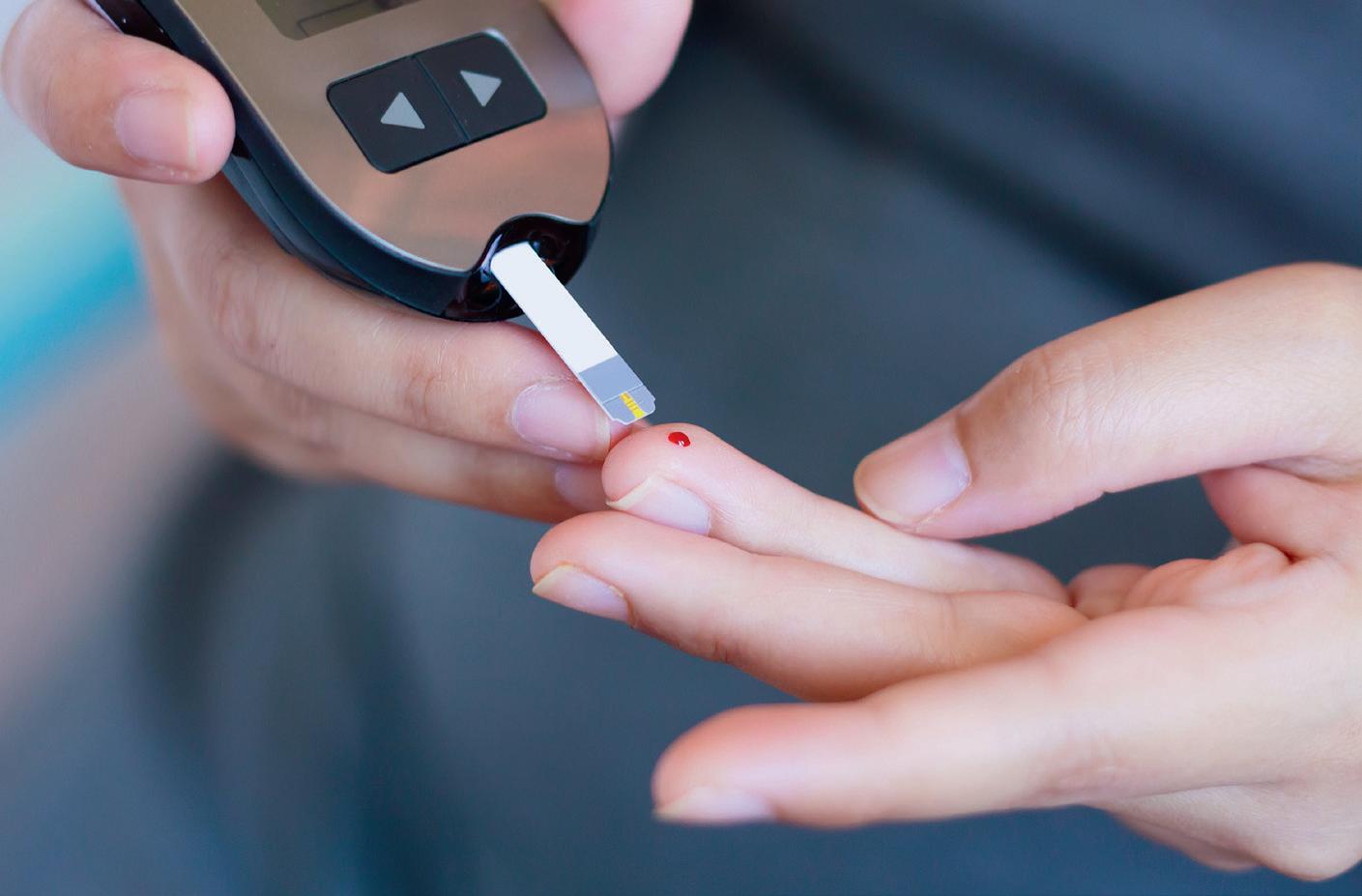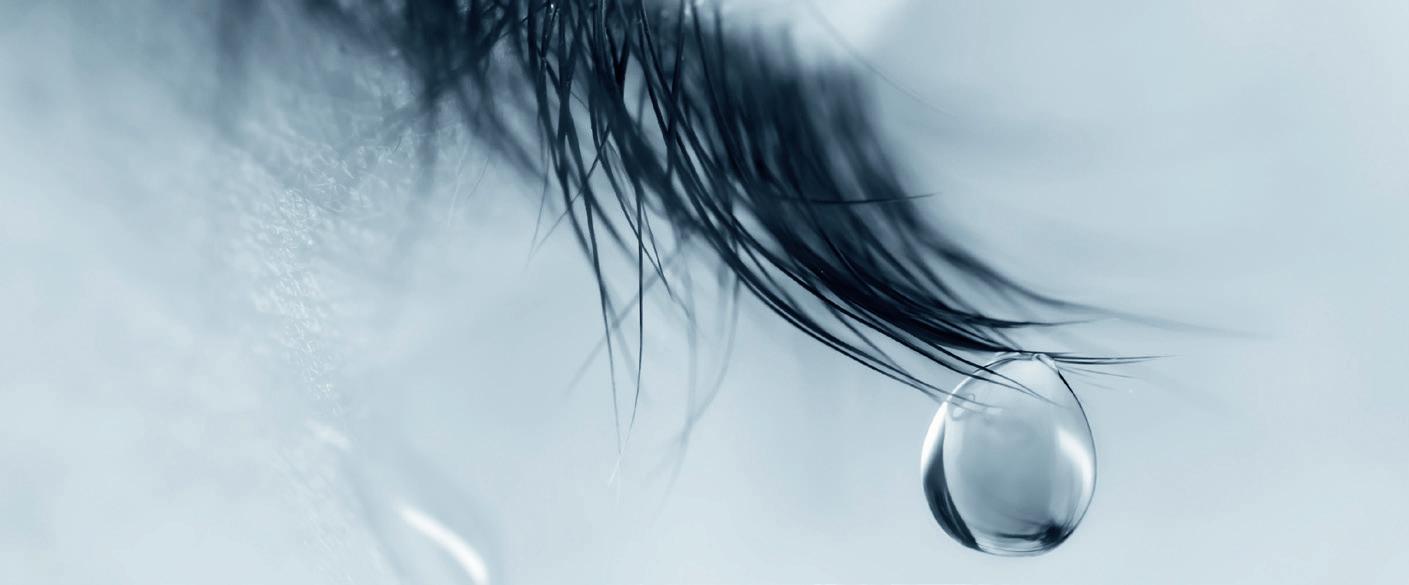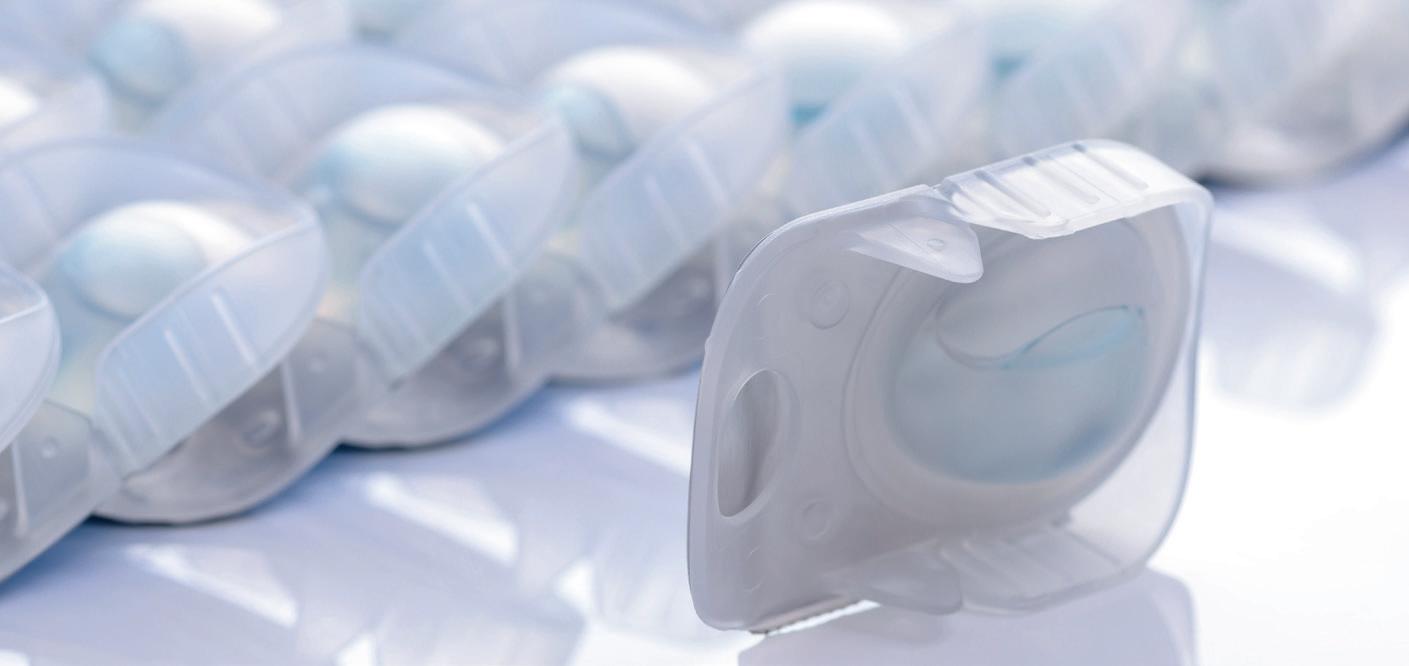
5 minute read
All about research
Studies on diagnostic contact lenses, a new sensor system, and tear film
Information technology increasingly finds its way into health research. Two studies show how smart contact lenses are intended to help diagnose and treat diabetes. The pre-lens drying time of two types of daily disposable contact lenses was the focus of research by Sebastian Marx, Julia Eckstein and Wolfgang Sickenberger.
Advertisement
Photonic contact lens for diabetic diagnosis
Geon-Hui Lee, Hanul Moon, Hyemin Kim, and a team of researchers developed a technology that allows diagnosis of diabetes and treatment of diabetic retinopathy by wearing a 'smart light-emitting diode (LED) contact lens.' The team invented a photonic contact lens and a wearable medical device which can diagnose diabetes and treat diabetic retinopathy. The research team developed a contact lens with integrated micro LED and photodetector which can measure glucose concentration in the conjunctival blood vessels by analyzing the near infrared light. They put their LED contact lenses on rabbit eyes with diabetic retinopathy disease and irradiated light repeatedly for a month. As a result, they confirmed that there was significant reduction of angiogenesis (production of new blood vessels) in the retina and verified the clinical feasibility of the smart LED contact lens for the diabetic retinopathy therapy. This device is supposed to let diabetic patients monitor their blood-sugar level in real-time and also enable medical treatment for retinopathy which is caused by diabetic complications. Based on these results, the team also developed a wearable medical device to analyze glucose concentration in sweat, and verified that it could be clinically feasible for diabetes diagnosis. With the company PHI Biomed, they developed a blue-tooth system that can send data wirelessly, with the goal of allowing patients to check their diabetic diagnostic results on their mobile phones.
Hydrogel contact lens for biomarker sensing

A collaborative team, which includes a group from the Terasaki Institute for Biomedical Innovation, has developed a fabrication method to meet the challenges in making a hydrogel contact lens for biomarker sensing. The work was supported by a grant from CooperVision. The team began by optimizing the components of the hydrogel to obtain elastic characteristics which would allow it to be engineered into various shapes with a smooth surface profile. They next fashioned microchannels in the hydrogel with the use of a 3D printed mold. The final step in the fabrication process was to enclose the hydrogel channels by bonding an additional layer of hydrogel onto the microchannel surface. Once the prototype was completed, it was tested for its performance in channeling and collecting fluids. Flow rates of artificial tears in the channels were measured at different levels of hydration, with zero flow measured at complete dehydration and full spontaneous flow observed at full hydration. A noteworthy observation during these tests was that when the hydrogel was mildly dehydrated, liquid flow in the channels would stop, but when additional rhythmic pressure was applied, the flow would resume. This was a demonstration of support for the hypothesis that eye blinking would also provide the necessary pressure and additional hydration needed to allow for tear flow in the contact lens, and therefore, in the eye. Next, the team prototyped sensors to collect, test for and measure pH levels of artificial tears flowing through the microchannels. Sodium levels were also tested, and the results showed an acceptable and predicted range of sodium detection for diagnostic purposes. Additional goals would be to fine-tune factors such as humidity, hydrogel hydration and applied pressure in order to enhance all the flow rates and dynamics of the biosensing contact lens. There are also plans to experiment with smaller channels in thinner hydrogel films before a final contact lens is devised.
Sources: Abstract of the study [3], EurekAlert 2020-11-23 [4]
Tear film stability of daily disposables
The wettability of a contact lens plays an important role in the experience of comfort for its wearer. Sebastian Marx, Julia Eckstein and Wolfgang Sickenberger have evaluated the non-invasive pre-lens drying time of two types of daily disposable contact lenses (DDCLs) after twelve hours of wear in vivo. As stated in the abstract of the paper the prospective, randomized, single-center, cross-over pilot study evaluated 31 subjects aged 18–44 years with normal eyes and good tear film stability who were adapted soft contact lens wearers at the time. The researchers had the subjects wear Nelfilcon A and Stenfilcon A DDCLs for twelve hours each on two different days. They recorded non-invasive video keratography drying-up time (NIK-DUT) videos of each eye twelve hours after lens insertion for about 25 seconds. A five minute tear film recovery time was allowed between video recordings of the right and left eyes to avoid bias. The team measured the post-blink time required to reach 15% distortion of the projected rings and the speed of break-up at 15 seconds post-blink at each time point. They determined the on-eye wettability by ring mire projection under white light illumination. The researchers found that the mean time to reach 15% ring distortion was similar for Nelfilcon A and Stenfilcon A DDCLs but varied highly among subjects. The mean speed of break-up at 15 sec post-blink is reported as 0.3±0.38% distortion/sec for Nelfilcon A and 0.2±0.23% distortion/sec for Stenfilcon A DDCLs. Marx, Eckstein and Sickenberger came to the conclusion that multifunctional topography allowed the objective evaluation of in vivo pre-lens tear film stability using ring mire projection. The researchers describe the dynamic method as being simple, fast and non-invasive, enabling measurements of NIK-DUT and evaluating wettability over an area that is larger than the optical zone of the contact lens surface, for the entire inter-blink interval.

Source: Abstract of the study [5]
Referenzen: [1] Lee, GH., Moon, H., Kim, H. et al. Multifunctional materials for implantable and wearable photonic healthcare devices. Nat Rev Mater 5, 149–165 (2020). https://doi.org/10.1038/s41578-019-0167-3 [2] https://www.eurekalert.org/pub_releases/2020-01/puos-nnt011020.php [3] Chen, Yihang et al. Microengineered poly(HEMA) hydrogels for wearable contact lens biosensing. Lab Chip, 2020,20, 4205-4214. DOI: 10.1039/ D0LC00446D [4] https://www.eurekalert.org/pub_releases/2020-11/tifb-clf112020.php [5] Marx S, Eckstein J, Sickenberger W. Objective Analysis of Pre-Lens Tear Film Stability of Daily Disposable Contact Lenses Using Ring Mire Projection. Clin Optom (Auckl). 2020;12:203-211 https://doi.org/10.2147/OPTO.S262353










